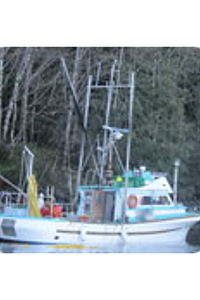Seafood diver drowns during attempt to return to surface
Notice of incident: October 2012
Notice of incident number: 2012139050198
Employer: Dive fishing company
Incident summary
A fishing vessel was engaged in a commercial seafood dive harvest fishery with three workers on board. A seafood harvest diver was using a surface air supply system with an on-board air compressor. The diver was working at a depth of about 50 feet (15 metres). He used a line-pull to signal a return to the surface, and the tender began to pull the diver up. An unknown event occurred and the bag line began to act strangely, so the tender stopped pulling the diver to the surface. The diver then began climbing the bag line. However, the diver was unable to hold on to the line, and he rapidly descended. The diver was brought to the surface by the crew, but was unresponsive and could not be revived.
Investigation conclusions
Causes
- Diver's mask may have flooded, leading to air embolism and drowning: The direct cause of the incident is not known. The diver was wearing a mask configured without a mouthpiece. It is believed that at some point during the incident, water may have entered the diver's mask, causing the diver to hold his breath while surfacing. Ascending without letting air out of his lungs may have caused an air embolism. On the way to the surface, the diver may have aspirated the water in the mask. The diver died as a result of air embolism and drowning.
Underlying factors
- Carbon dioxide buildup: The diver was using a full-face mask, which is effectively a sealed environment. Air from the compressor was entering the mask through the second-stage regulator on the demand of the diver. When the diver exhaled, the air was expelled through side ports on the regulator. Testing determined there were poor exhaust characteristics on the regulator. The diver may have experienced a buildup of carbon dioxide due to the strenuous work he was performing. Additionally, the surface air supply was producing a lower air pressure than what was required, which would have caused the diver's breathing to be laboured. This type of breathing over the length of the dive could lead to higher levels of carbon dioxide building up within his system. The diver may have let go of the bag line as he neared the surface due to carbon dioxide buildup in his full-face mask.
- Communication: It is not known what caused the bag line to act strangely, which in turn led the tender to stop pulling the diver to the surface. Line-pull signals in place on the vessel were understood and in use by the crew for the past three seasons. The vessel did not have any emergency signal in place to identify a diver emergency.
- Lack of diving supervisor: No one on board was designated as the diving supervisor. This resulted in a significant number of responsibilities being overlooked, such as holding crew briefings, completing log entries, monitoring decompression stops and rest periods, preplanning dives, and evaluating hazards.
- Lack of proper diving logs: There was a failure to keep accurate records of diving operations including the required information that tracked diving activities. The emphasis on board was to keep records that were required for Fisheries and Oceans Canada: a daily diving log with information that was transferred to the harvest log.
- Lack of proper dive planning: Dive operations were not planned. There were no crew briefings; diving tables were not used to plan dive operations; and dives were carried on for extended periods, thereby requiring decompression stops. Rather than performing dive planning, the crew relied on diving computers to track and monitor real-time dive profiles.
- Insufficient crew: There was no standby diver on board the vessel at the time of the incident. No one was equipped and ready to enter into the water within the required one-minute time period. The vessel was operated by a three-person crew, which would have met the requirements of the Occupational Health and Safety Regulation if the no-decompression limit had not been exceeded. However, the depth and length of the diving operations required a minimum crew of four on board.
- Improper dive air system: The surface supply air system did not meet the requirements of the Occupational Health and Safety Regulation and was modified without the approval of the manufacturer. The air pressure fell below the requirements described by calculation in the Regulation.

